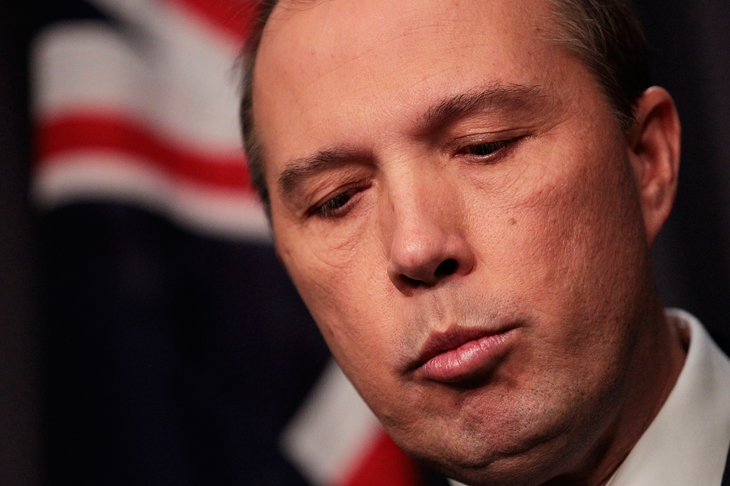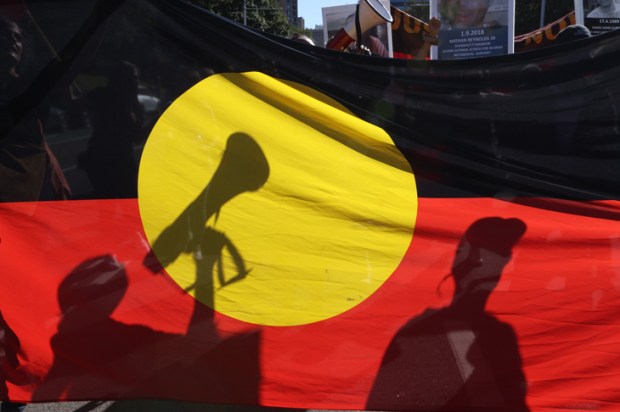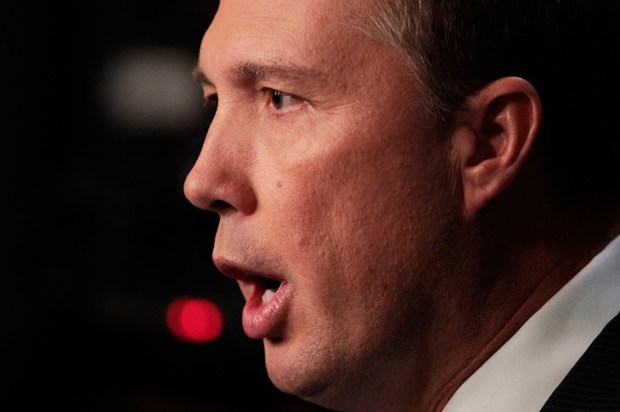If we look at the former British colonies of India, Pakistan, Sri Lanka and South Africa, we can see several similarities. They are all, despite somewhat shaky starts, parliamentary democracies; they all have independent judiciaries; and they all have a free press. But, until recently, only the first three have been providing Australia with a steady stream of refugee applicants.
Peter Dutton’s inflammatory suggestion that South African white farmers might be given special consideration predictably brought howls of outrage from the Left. Greg Barns, the Australian Lawyers Alliance spokesperson on asylum seekers said, ‘… if Dutton is concerned about individuals who face land grabs from government, then why isn’t he equally welcoming of Palestinians and the Rohingyas? The answer, of course, is that these groups are not white and middle class’.
Peter Goers, an ABC Adelaide broadcaster, has said ‘APPARENTLY we don’t have enough racists in Australia. We need white South African farmers fleeing a problem they created with black South Africans — literally reaping what they sowed. Are we still fighting the Boer War?’ and so on and so on. The Left was having none of it.
But if we are going to accept refugees from Pakistan and India, then why not from South Africa? The Department of Home Affairs is currently considering almost 1,000 applications for refugee status from Pakistani citizens. Most of the claims centre around the conflict between Sunni and Shia Muslims. No one has told the Pakistanis that Islam is a religion of peace and love. Consequently, the various sects in that benighted country make frequent use of car bombs in crowded markets to express their feelings. So those that come to Australia on student or visitor visas will often apply for a Protection Visa rather than return. Some are successful despite coming from what, in Pakistan, would be considered wealthy middle-class family backgrounds. While most onshore applications for refugee status are rejected, the process is time consuming and gives applicants a longer stay in Australia. Not many Pakistani people have the forty or fifty thousand dollars spare to convince the Border Force crowd that they deserve a student visa.
Equally, with applicants from India we often see the wealthier middle-class citizens are the ones who are able to gain entry to Australia on visitor or student visas and then, once those visas expire, lodge Protection Visas in Australia. In a not atypical case, a woman was awarded a Protection Visa on the basis of her lesbian predilections despite having had a child since arriving in Australia. The Refugee Review Tribunal members’ decision record noted that ‘this fact appeared to be inconsistent with her being a lesbian’. Nevertheless she got the visa because her relatives and those of her ex-husband and various religious groups had, allegedly, threatened to kill her because she claimed to be a lesbian (Refugee Review Tribunal cases reference RRT/23844).
The refugee assessment system has been gamed by third world applicants for the past thirty years. Australia, Britain, Canada, the USA and Europe have all supported the fiction that all is well in the refugee industry because no one can think of a better way to deal with the problem of onshore refugee applications. Certainly, zealots such as Sarah Hanson-Young and Pauline Hanson, (what is it with the Hansons?) do not encourage calm discussion of this complex issue.
The UN Convention which governs refugee procedures was designed to sort out the mess created by Hitler’s mad rampage through Europe and it worked well for some time. But cheap air travel, growing awareness of the Western world and, above all, the development of improved telecommunications have shrunk the world to McLuhan’s global village. In pre-industrial times, most people lived and died within a few kilometers of where they were born. In 18th century Europe, most citizens never saw the capital city of the country in which they lived.
Today the whole world is aware of the advantages of living in a Western democracy and consequently millions of people, especially young men from war-torn Islamic countries, are trying to escape what Trump so tactfully called ‘shithole countries’ to get to the West.
We should remember that the Vietnamese who came to Australia on the boats in the 70’s were those who could afford to do so and it is the same with every ethnic group. Australia’s onshore refugee applicants are often not those with the greatest need, but those with the most money and it is only the children of the affluent elite who have access to the sort of money which will enable them to acquire a visa which allows them to enter Australia legally and then apply for refugee status. To get a student visa to enter Australia will usually require access to around fifty thousand dollars. The truly destitute, the single women, the widows with young children, and orphans, languish in refugee camps around the world. There are 20 million of them and many will probably live and die in vast camps with little hope of return to their place of birth or relocation to another country.
So why should we accept white South African refugees at the expense of deserving cases from the refugee camps?
Because white South African farmers have as much right as sub-continental lesbians to use the onshore refugee application process to get out of their homeland. The various branches of the government concerned with processing onshore refugee applications are reluctant to provide detailed statistical analysis of the percentage of successful onshore refugee applications broken down into the source countries. So there is no way of accurately determining whether an Afghani or Sri Lankan applicant has a better chance of getting a Protection Visa than a white South African farmer. But a close reading of the decision records in several dozen RRT cases left me with a suspicion that the bar is set a little higher for South African whites than it is for Third World applicants.
The central issue in most RRT cases is credibility, and I thought that the published cases of the South African whites were, on average, more convincing than those of Third World applicants. This may be because the whites are better liars or, as my youngest daughter seems to think, because I am a racist. But it may just be that the South African whites do present more convincing claims because they are telling the truth.
Those who are interested in this matter should look closely at the decision records published online. They show the challenges faced by the Tribunal members and often make for interesting reading.
Got something to add? Join the discussion and comment below.
Get 10 issues for just $10
Subscribe to The Spectator Australia today for the next 10 magazine issues, plus full online access, for just $10.
You might disagree with half of it, but you’ll enjoy reading all of it. Try your first month for free, then just $2 a week for the remainder of your first year.














Comments
Don't miss out
Join the conversation with other Spectator Australia readers. Subscribe to leave a comment.
SUBSCRIBEAlready a subscriber? Log in